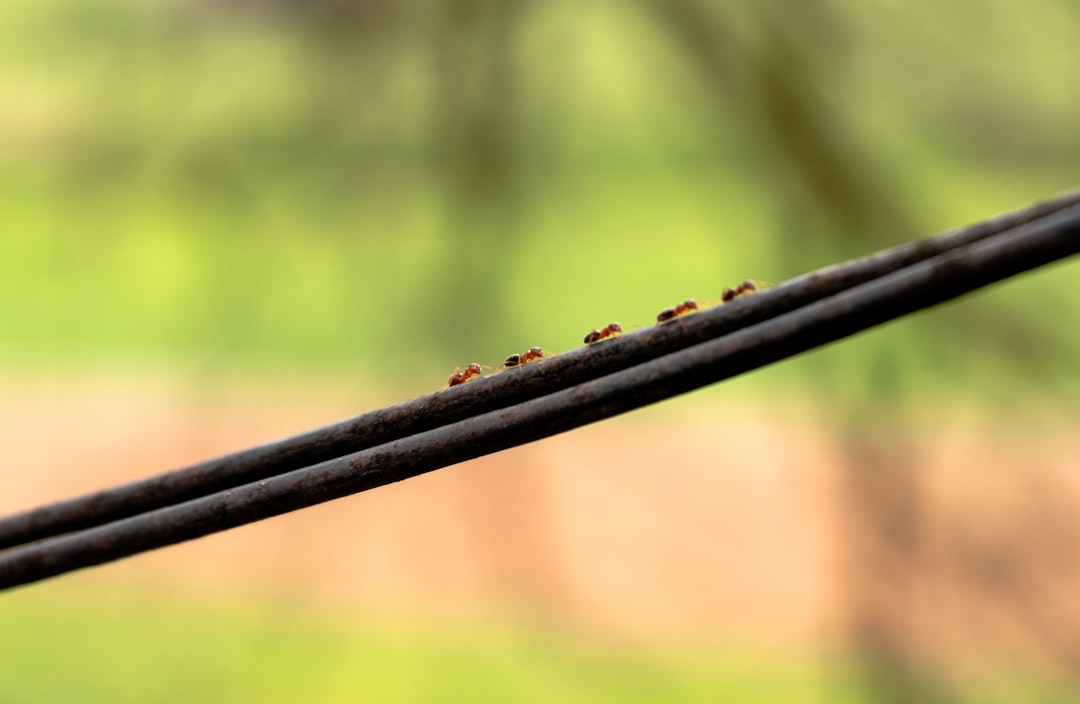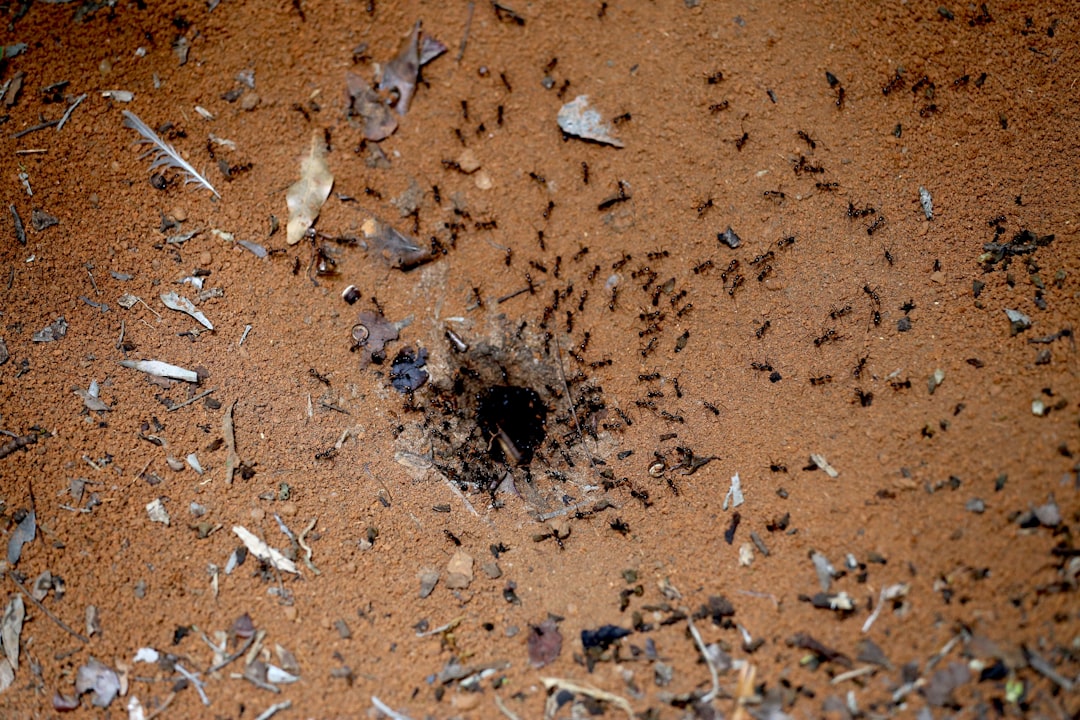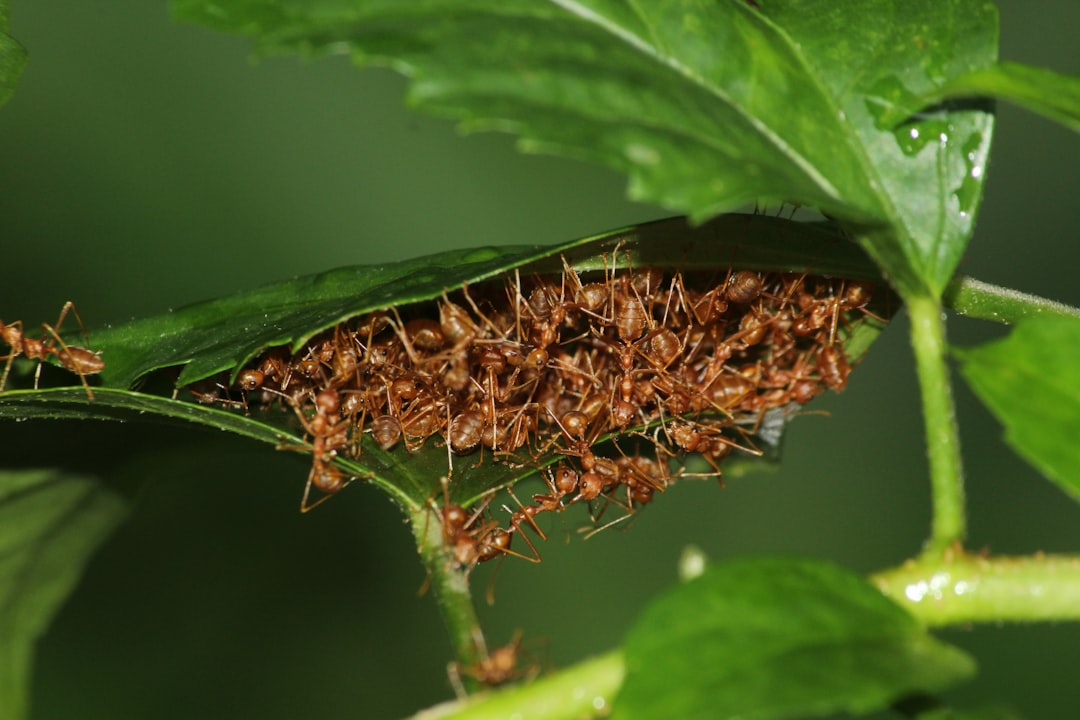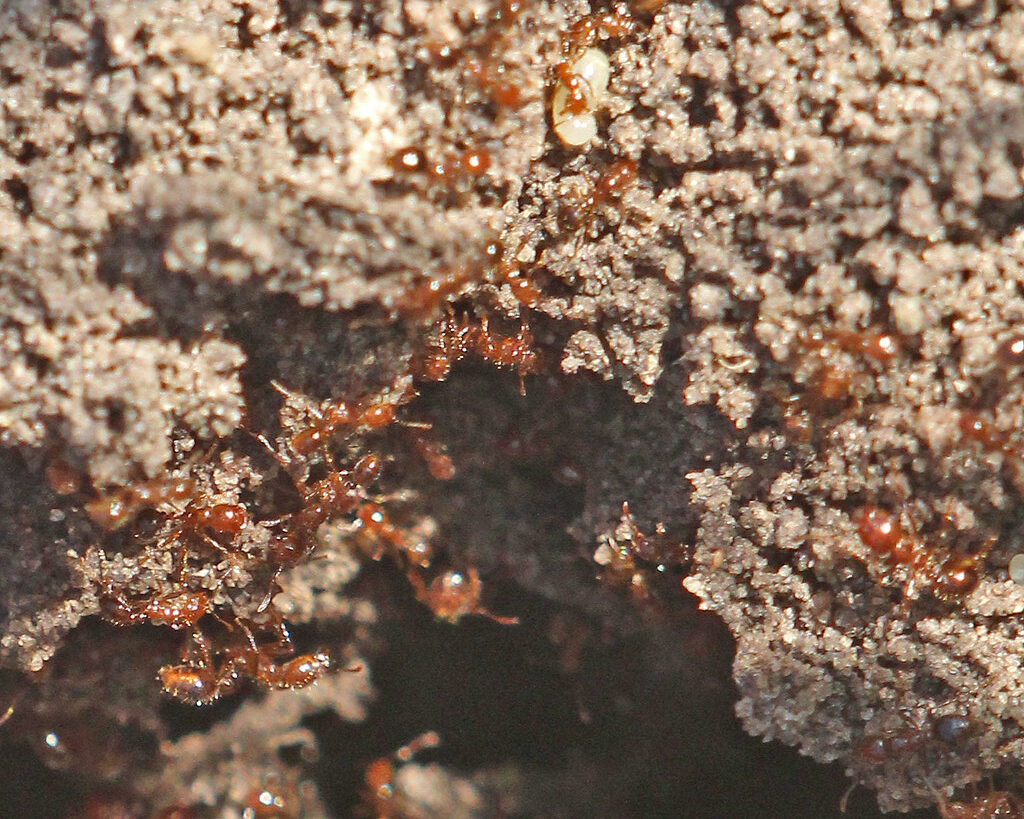Beneath your feet right now, there’s a civilization that makes New York City look like a sleepy village. While you walk across a seemingly empty patch of ground, millions of tiny architects are building, expanding, and managing cities that would make urban planners weep with envy. These aren’t science fiction fantasies – they’re ant colonies, and they’re operating on a scale that puts our greatest metropolitan achievements to shame.
The Hidden Metropolis Beneath Our Feet

Imagine discovering that your backyard contains a city with more residents than Tokyo, complete with highways, waste management systems, and climate control that works better than any human invention. That’s exactly what researchers found when they began studying the largest ant colonies on Earth. The leafcutter ant colonies of South America can house up to 8 million individuals in underground networks spanning several city blocks. These aren’t just random tunnels either – they’re carefully planned urban environments with designated areas for different activities. Some chambers serve as nurseries for young ants, others function as garbage dumps, and still others act as fungus gardens that feed the entire population. The engineering precision rivals anything humans have built, except these cities were constructed by creatures weighing less than a paperclip.
Engineering Marvels That Put Skyscrapers to Shame

When engineers study ant colonies, they often walk away feeling humbled by what they discover. A single leafcutter ant colony can move 40 tons of soil annually – that’s equivalent to a construction crew working around the clock with heavy machinery. The tunnels maintain perfect ventilation without a single electric fan, using principles of airflow that human architects are still trying to fully understand. These underground cities feature multiple levels, with some chambers located 20 feet below ground, connected by highways that allow two-way traffic flow more efficiently than most human road systems. The temperature inside these colonies remains constant year-round, achieved through strategic positioning of air vents and thermal regulation chambers. What makes this even more remarkable is that no single ant has the blueprint for the entire city – it emerges from collective intelligence that surpasses our most advanced computer modeling systems.
Population Density That Makes Manhattan Look Spacious

If you think city living is crowded, you’ve never seen the inside of an ant colony. The population density in some ant cities reaches 1.5 million individuals per square meter – that’s like cramming the entire population of Philadelphia into a space the size of a small apartment. Yet somehow, traffic jams are virtually nonexistent in these underground metropolises. Army ant colonies can contain up to 20 million individuals, all moving in perfect coordination without a single traffic light or stop sign. These populations fluctuate seasonally, with some colonies doubling in size during peak reproductive periods. The logistics of feeding, housing, and organizing such massive populations would overwhelm any human city planner. But ants manage it all through chemical communication systems and behavioral protocols that have evolved over millions of years.
The Ultimate Urban Planning Success Story

Urban planners spend years studying traffic flow, zoning laws, and infrastructure development, but ants figured out optimal city design millions of years ago. Ant colonies feature distinct districts with specialized functions, much like human cities have financial districts, residential areas, and industrial zones. The main highways in ant cities are wider and more heavily trafficked, while smaller tunnels branch off like residential streets. Emergency evacuation routes are built into every major ant city, allowing entire populations to relocate in minutes when threatened. Waste management systems in ant colonies are so efficient that they make human recycling programs look primitive by comparison. The most impressive part is that these cities can expand or contract based on population needs, something human cities struggle with despite all our technology and planning expertise.
Communication Networks That Rival the Internet

Before humans invented the telegraph, ants had already perfected a communication system that spans their entire underground cities. Chemical signals called pheromones create an information superhighway that allows instant communication across vast distances within the colony. These chemical messages can convey complex information about food sources, threats, construction needs, and population changes with remarkable precision. The communication system is so sophisticated that it can route messages around damaged areas, much like how internet data finds alternate pathways when servers go down. Different types of messages use different chemical signatures, creating what amounts to multiple communication channels operating simultaneously. What’s truly mind-blowing is that this entire communication network operates 24/7 without any central control system or maintenance crews.
Construction Projects That Never Sleep

While human construction crews take breaks for lunch, weekends, and sleep, ant construction projects run continuously around the clock. A single ant colony can excavate and move thousands of tons of earth in a construction season, creating tunnels and chambers with architectural precision that would impress any engineer. The construction process involves specialized worker castes, each with specific roles in the building process, much like human construction crews have electricians, plumbers, and carpenters. These tiny builders can create perfectly circular chambers, spiral staircases, and ventilation systems without blueprints or measuring tools. When damage occurs to their cities, repair crews mobilize instantly, often completing major renovations in hours rather than the months or years human cities require. The most remarkable aspect is that construction continues even during harsh weather conditions that would shut down human building projects completely.
Agricultural Systems That Feed Millions

Long before humans developed agriculture, leafcutter ants were already running sophisticated farming operations that could feed millions of residents. These agricultural systems involve cultivating fungus gardens in specially designed chambers, complete with climate control and waste management systems. The ants don’t just grow their food – they actively manage soil pH, humidity levels, and nutrient distribution with the precision of modern agricultural scientists. Some ant species have been farming the same fungus strains for over 50 million years, maintaining genetic diversity and crop health through selective breeding techniques. The agricultural output per square foot in ant colonies exceeds most human farms, achieved through intensive cultivation methods and zero-waste recycling systems. These farming operations support not just the current population but also maintain seed stocks for future generations, demonstrating long-term planning that many human agricultural systems lack.
Defense Systems More Advanced Than Military Bases

The security systems in ant colonies make Fort Knox look like a house with an unlocked front door. Multiple layers of defense protect these underground cities, starting with sentinel guards stationed at every entrance point. These security forces can mobilize thousands of defenders within minutes of detecting a threat, coordinating their response through chemical alarm signals that spread faster than human emergency communication systems. The architectural design itself serves as a defense mechanism, with narrow entrance tunnels that can be quickly blocked and maze-like passages that confuse invaders. Some ant species have developed specialized soldier castes with oversized heads that can literally plug tunnel entrances like living doors. The most impressive aspect is that these defense systems operate on multiple levels simultaneously, protecting against aerial threats, ground invasions, and underground attacks from other ant colonies.
Climate Control Without Air Conditioning

While humans burn enormous amounts of energy to heat and cool our buildings, ant colonies maintain perfect climate control using nothing but clever engineering and physics. The ventilation systems in large ant colonies create air currents that naturally regulate temperature and humidity throughout the entire underground city. Strategic placement of entrance and exit holes creates a natural air conditioning system that works more efficiently than most human HVAC systems. Some colonies feature specialized chambers that act as thermal buffers, absorbing heat during the day and releasing it at night to maintain stable temperatures. The humidity control in fungus-growing chambers is so precise that it would be the envy of any museum or laboratory trying to preserve delicate specimens. These climate control systems operate continuously without any mechanical parts, maintenance schedules, or energy costs.
Waste Management That Achieves Zero Landfills

Human cities generate millions of tons of waste that end up in landfills, but ant colonies have achieved something we’re still struggling with – complete waste elimination. Every scrap of organic matter in an ant colony gets recycled or repurposed, creating a circular economy that produces zero waste. Dead ants are processed into fertilizer for fungus gardens, food scraps become compost, and even construction debris gets reused in new building projects. The waste management system involves specialized worker groups that collect, sort, and process different types of waste with the efficiency of automated recycling plants. Some ant species maintain dedicated waste processing chambers located strategically throughout their cities to minimize transport costs and maximize efficiency. This zero-waste system has been operating successfully for millions of years, proving that sustainable living is not only possible but can support massive urban populations.
Transportation Networks That Never Experience Gridlock

Rush hour traffic is unknown in ant cities, despite population densities that would paralyze any human transportation system. The highway networks in ant colonies feature multiple lanes, bypass routes, and traffic management systems that keep millions of individuals moving smoothly. These transportation networks adapt in real-time to changing conditions, automatically rerouting traffic around obstacles or construction zones without any central traffic control system. The efficiency of ant transportation systems is so remarkable that computer scientists study them to improve algorithms for autonomous vehicle coordination. Different types of cargo move along designated routes, with food transport, construction materials, and waste removal following separate pathways to avoid conflicts. The entire system operates on principles of collective intelligence and chemical communication that eliminate the need for complex traffic management infrastructure.
Social Organization Beyond Human Complexity

The social structure of ant colonies makes human organizational charts look like simple sketches compared to architectural blueprints. These societies feature multiple specialized castes, each with specific roles and responsibilities that contribute to the functioning of the entire city. The division of labor is so sophisticated that some ant species have over 20 different worker types, each physically adapted for their specific tasks. Communication hierarchies ensure that information flows efficiently from the bottom to the top and back down again, creating feedback loops that allow rapid adaptation to changing conditions. The most remarkable aspect is that these complex social systems operate without any central authority or bureaucracy – every individual knows their role and performs it without supervision or management oversight. This self-organizing system has proven so successful that it has remained essentially unchanged for millions of years while human societies constantly struggle with organizational challenges.
Resource Management That Maximizes Efficiency

When it comes to resource management, ant colonies operate with an efficiency that would make any economist jealous. Every calorie of energy is allocated with precision, ensuring maximum benefit for the entire colony while maintaining reserves for emergencies. The resource distribution system can adjust automatically to seasonal changes, population fluctuations, and external threats without any central planning committee or budget meetings. Storage facilities within ant cities are strategically located to minimize transport costs and maximize accessibility during critical periods. Some colonies maintain multiple food storage systems, with different chambers specializing in different types of resources to ensure dietary diversity and nutritional balance. The inventory management system tracks resource levels continuously, triggering collection and production activities before shortages occur rather than responding to them after the fact.
Expansion Strategies That Adapt to Growth

Unlike human cities that often grow haphazardly and create urban sprawl problems, ant colonies expand according to sophisticated growth strategies that maximize efficiency while minimizing environmental impact. The expansion process involves careful site selection, with scout teams evaluating soil conditions, drainage patterns, and resource availability before committing to new construction. New sections of the colony are integrated seamlessly with existing infrastructure, maintaining optimal traffic flow and communication networks throughout the expansion process. The construction timeline for major expansions is coordinated with seasonal cycles and resource availability, ensuring that growth doesn’t compromise the stability of the existing city. Some ant species maintain satellite colonies connected by above-ground highways, creating metropolitan areas that span multiple locations while maintaining centralized coordination. These expansion strategies have allowed some ant colonies to persist in the same locations for decades, continuously adapting to changing environmental conditions while maintaining their core urban structure.
Conclusion: Lessons for Human Urban Development

As human cities struggle with traffic congestion, pollution, and resource scarcity, the solutions may literally be right beneath our feet. Ant colonies demonstrate that sustainable urban living is not only possible but can support populations far denser than any human city. The principles of collective decision-making, efficient resource allocation, and adaptive infrastructure design offer blueprints for reimagining human urban development. Scientists and urban planners are already incorporating ant-inspired algorithms into smart city designs, traffic management systems, and sustainable architecture projects. The zero-waste systems, climate control methods, and communication networks found in ant colonies provide practical models for reducing the environmental impact of human cities. Perhaps most importantly, ant colonies prove that complex urban systems can operate successfully without centralized control, offering insights into more resilient and adaptive city designs for our rapidly urbanizing world. What would happen if we started designing our cities more like ant colonies and less like the sprawling, inefficient metropolises we currently call home?

